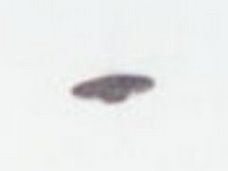A series of murders that took place in the East End of London from August to November 1888 were blamed on an unidentified assailant known as "Jack the Ripper". Since that time, the identity of the killer has been hotly debated, and over one hundred Jack the Ripper suspects have been proposed. Though many theories have been advanced, experts find none widely persuasive, and some can hardly be taken seriously at all.
Jack the Ripper is the world’s most famous serial killer. Yet his reign of terror lasted a mere 10 weeks and was confined to a small area of the Victorian Metropolis. It is difficult today to say how many victims he actually had, though it is generally agreed that there were five. These five were Mary Nichols, Annie Chapman, Elizabeth Stride, Catherine Eddowes and Mary Kelly. The first victim, Mary Nichols, was murdered on August 31st 1888. The final victim, Mary Kelly, was murdered on 9th November 1888.
The killings took place in one of the most crime ridden parts of Victorian London, and all the victims were common street prostitutes. The question that has eluded dedicated researchers for over a hundred years now is who was Jack the Ripper? Obviously today it is virtually impossible to answer this question with 100% certainty. We can look at what the detectives of the time, those who investigated the killings, had to say. But in order to even attempt to answer the question we must first ask and answer another question. What happened to Jack the Ripper to stop him killing?
If we accept that Mary Kelly was the last victim of Jack the Ripper, then we must also accept that something happened to the killer shortly after the bloodbath in Miller’s Court (the place where Mary Kelly lived and where she was murdered in the early hours of 9th November 1888). Murderers such as this don’t stop killing. They may lie low for a while, perhaps even for many years. But the desire to kill remains and can be re-awakened at anytime, unless something happens to the murderer to stop him.
In the case of Jack the Ripper that something was doubtless one of four things. He may have died, possibly by his own hand, shortly after he killed Mary Kelly. He may have been living with his family and they either realised he was insane and incarcerated him in a lunatic asylum, or possibly even handed him over to the police. A third, though unlikely, explanation is that he moved somewhere else continued killing and the connection was never made. This is an unlikely explanation since the murders were reported all over the world, and had a similar killing spree occurred somewhere else there is little doubt that the connection would have been made. The fourth and most likely scenario, however, is that at some stage in the days or months that followed the murder of Mary Kelly the police finally got the break they’d been hoping for since the killings began, and Jack the Ripper was finally caught. So having considered the options as to what happened to the murderer we can now turn our attentions to the question everybody wants to know. Who was he?
Throughout the autumn of 1888 the Victorian police were arresting suspect after suspect but each time they arrested a likely looking candidate they were either able to provide cast iron alibis for their whereabouts on the nights of the murders, or else were exonerated by actual events when the killer struck again whilst they were in police custody.
On 19th September the Chief of London police (Metropolitan Police Commissioner) Sir Charles Warren wrote to the Home Office to update them on progress, or to be more precise lack progress, in the police investigation. “A great number of clues have been examined & exhausted without finding anything suspicious. A large staff of men are employed and every point is being examined which seems to offer any prospect of a discovery.” He also mentioned three men against whom the police had suspicions.
The first was Jacob Isenschmid, an insane pork butcher from Switzerland who had been arrested at Holloway and was now in an asylum. Abberline had written of this suspect on 18th September “Although at present we are unable to procure any evidence any evidence to connect him with the murders, he appears to be the most likely person that has come under our notice to have committed the crimes.” Apparently two doctors Dr Cowan and Dr Landseer had alerted the police to the fact that this man, whom they knew to be a lunatic, was the murderer. His landlord told the police that he was absent from his lodgings during the night when Annie Chapman was murdered. His estranged wife, Mary, told Sergeant Thicke that although her husband was violent she did not thing he would “…injure anyone but me. I think he would kill me if he had the chance.” But, as with Ludwig, Isenschmid was also not the murderer, for on the 30th September, when the killer struck again, the mad Swiss Pork Butcher was caged in an asylum.
Warren’s second suspect was Oswald Puckeridge who had been “released from an asylum on 4th August [and who] has threatened to rip people up. He is being looked for but cannot be found as yet.” Not a great deal has been found about Puckeridge, and even less is known about why the police suspected him. It would seem that the police may have traced him and eliminated him as a suspect, since his name was not included on later lists of suspects.
The final suspect is even more elusive since Warren doesn’t identify him but merely states that “A brothel keeper who will not give her address or name writs to say that a man living in her house was seen with blood on him on morning of murder. She described his appearance & said where he might be seen. When the detectives came near him he bolted, got away & there is no clue to the writer of the letter.”
Evidently the police were no nearer catching the killer by the end of September 1888 than they had been at the start of Jack the Ripper’s killing spree. But the suspects being brought in and questioned at least give us an insight into the type of person the police thought they were dealing with and so provide us with something of an insight into the police thinking at the height of the Jack the Ripper scare.
However, it is now time to look beyond the autumn of terror and look at the suspects that the police had after the final Jack the Ripper murder, that of Mary Kelly on the 9th November 1888.
On 13th February 1894 The Sun Newspaper began a series of articles that did not reveal the name of their suspect but were obviously referring to one Thomas Hayne Cutbush. Thomas is said to have contracted syphilis in 1888 after which he began suffering paranoid delusions. On March 5th 1891 he was detained at Lambeth Infirmary as a wandering lunatic, but he escaped within hours. Over the next few days he stabbed a lady named Florence Grace Johnson, using a knife he had purchased in Houndsditch the week before. He then attempted to stab another lady, Isabelle Frazer Anderson before being arrested on 9th March 1891. He was arraigned at the London County Sessions in April 1891, found to be insane and was sentenced to be detained during Her Majesty's Pleasure. He was sent to Broadmoor Criminal Lunatic Asylum where he remained until his death in 1903.
Cutbush was the nephew of Superintendent Charles Henry Cutbush, who was responsible for supplies and pay at Scotland Yard. Doubtless he was one of the “relatives” referred to in the articles as being “in positions which would make them a target for the natural curiosity...” In 1896 Superintendent Cutbush shot himself in the head in his own kitchen in the presence of his daughter.
The Police, it appears, had already considered and looked into the possibility of Cutbush’s being Jack the Ripper and had ruled him out as a suspect. But, as a result of The Sun’s accusations, Melville Macnaghten was asked to prepare a report in which he refuted the newspapers allegations. Now known as the Macnaghten Memoranda this report was one of the first official documents to provide an insight into who the police at the time thought the killer was. Macnagheten mentions three suspects who were more likely to have been the murderer than Cutbush. It is important to note that Macnaghten does not say any of the three were Jack the Ripper, just that they were more plausible suspects than Cutbush. Referring to the killings Macnaghten wrote:
It will be noted that the fury of the mutilations increased in each case, and, seemingly, the appetite only became sharpened by indulgence. It seems, then, highly improbable that the murderer would have suddenly stopped in November '88, and been content to recommence operations by merely prodding a girl behind some 2 years and 4 months afterwards. A much more rational theory is that the murderer's brain gave way altogether after his awful glut in Miller's Court, and that he immediately committed suicide, or, as a possible alternative, was found to be so hopelessly mad by his relations, that he was by them confined in some asylum.
No one ever saw the Whitechapel murderer; many homicidal maniacs were suspected, but no shadow of proof could be thrown on any one. I may mention the cases of 3 men, any one of whom would have been more likely than Cutbush to have committed this series of murders:
(1) A Mr M. J. Druitt, said to be a doctor & of good family -- who disappeared at the time of the Miller's Court murder, & whose body (which was said to have been upwards of a month in the water) was found in the Thames on 31st December -- or about 7 weeks after that murder. He was sexually insane and from private information I have little doubt but that his own family believed him to have been the murderer.
(2) Kosminski -- a Polish Jew -- & resident in Whitechapel. This man became insane owing to many years indulgence in solitary vices. He had a great hatred of women, specially of the prostitute class, & had strong homicidal tendencies: he was removed to a lunatic asylum about March 1889. There were many circumstances connected with this man which made him a strong 'suspect'.
(3) Michael Ostrog, a Russian doctor, and a convict, who was subsequently detained in a lunatic asylum as a homicidal maniac. This man's antecedents were of the worst possible type, and his whereabouts at the time of the murders could never be ascertained.
skip to main |
skip to sidebar




--------------------------------------------------

--------------------------------------------------


-------------------------------------------------

2007 - Tatui-Sao Paulo, Brazil

2007 - Big Basin, California

2004 - Long Island, New York

2001 - Foster City, California

1995 - Kazakhstan, Russia

1993 - Ochre Point, Southern Australia

1992 - Pueblo, Mexico

1989 - Nashville, Tennessee

1982 - Switzerland
# MASKED PRISONER # DINOSAURS # RIPPER # ALIENS # HUMAN COMBUSTION # GIANT LIZARD # BURIAL PLACE OF GHENGIS # PHILOSOPHER'S STONE # REINCARNATION # POLTERGEIST # HAUNTED CASTLES # MIGRATION # KING ARTHUR # DEATH WORM # BERMUDA TRIANGLE # DEVIL # GHOSTS # DRAGONS # YETI # UFOS # NOSTRADAMUS # LEVITATION # NOAH'S ARK # DRAGON'S TRIANGLE # SASQUATCH # GHOST OF BREGAVY # GIANT CHIMPS # "NTIKYTHERA # STONEHENGE # ATLANTIS # MONSTER OF THE AMAZON # PHANTOM # GHOSTS # MONSTERS
Facebook Badge
Labels
- 'THE NATIONAL' ABU DHABI AND 'THE TRIBUNE' NORTH INDIA (1)
- "CITY AUTHOR PENS RECORD" - SHARING THE NEWS ITEM WHICH WAS PUBLISHED IN YESTERDAY'S 'DAINIK JAGRAN' NEWSPAPER ('CITY PLUS' SUPPLEMENT) (1)
- 2013 (1)
- 2015 (2)
- A Link between Egypt and Americas? (1)
- a record book published by Coca Cola India (1)
- Aliens love oceans (1)
- An article about my five books...published in eight months... (1)
- An Excerpt From My Book: "A Matter Of Survival" (1)
- and first political crime thriller) (1)
- Another newspaper story about my career as an author (1)
- Article about me: "Writing a new chapter at 50 plus"... (1)
- Article about my books and me in the national daily The Hindustan Times (1)
- ARTICLE ABOUT MY FIVE BOOKS IN THE TIMES OF INDIA (1)
- ARTICLES ABOUT MY BOOKS IN 'GULF NEWS' DUBAI (1)
- as author with most books on crime fiction in shortest time (1)
- AT THE TIMES GROUP BOOKS STALL...DELHI WORLD BOOK FAIR 2013...WITH TWO OF MY BOOKS (1)
- Atlantis - The Lost Continent (1)
- caught on camera (1)
- Cleopatra died of drug-spiked cocktail (1)
- Colorado (1)
- Did Napoleon die from poisoning? (1)
- Dragons - Myth Or Reality? (1)
- Easter Island's Walking Stones (1)
- Eight book reviews of my new novel "Chief Minister's Mistress"..... (1)
- Extinction of dinosaurs (1)
- Famous American Ghosts... (1)
- Featuring for two consecutive years in the Limca Book of Records (2012 and 2013) (1)
- Ghosts (1)
- Giant Chimps Of The Magic Forest (1)
- Haunted Scottish Castles (1)
- I feature in the Forbes 2014 list of Top 100 Celebrity Indian Authors (1)
- indicate Russian Navy UFO records (1)
- Interview in Spectral Hues.....September (1)
- King Arthur - real or a figmant of imagination? (1)
- Levitation (1)
- Loch Ness Monster 'caught on camera' off British coast (1)
- My Author's Corner event at the Delhi World Book Fair (1)
- My first book... (1)
- My fourth book (1)
- My interview in 'Suburb'.....September (1)
- My new book (my 16th release (1)
- My second novel: "The Inheritance" has been published (1)
- My three books (1)
- MY WEBSITE (1)
- Mystery of the Lizard Man (1)
- National Record Certificate: 2014.....Fastest published crime fiction author of India (fourth year in a row) (1)
- not snakebite says a German scientist (1)
- Phantom Of The Exploding Mountain (1)
- Poltergeists (1)
- Predictions Of Nostradamus (2)
- Reincarnation (1)
- Spontaneous Human Combustion (1)
- The Antikythera Mechanism (1)
- The Bermuda Triangle (1)
- The Cause Of Tutankhamun's Death (1)
- The Devil (1)
- The first buyer of my second book - Shivangi Dhingra (1)
- The Ghost of Mary Bregavy (1)
- The Ghost Ship Mary Celeste (1)
- THE GHOSTS OF THE TOWER OF LONDON (1)
- The Ica Stones (1)
- The Man in the Iron Mask - A Historical Mystery (1)
- The migratory instinct... (1)
- The Mongolian Death Worm (1)
- The Monster Of The Amazon (1)
- The Mystery Of The Dragon's Triangle (1)
- The philosopher's stone (1)
- The Quest For Sasquatch (1)
- The Stones Of Stonehenge (1)
- The Universal Flood – And Noah’s Ark (1)
- TWO RECENT NEWSPAPER REPORTS ABOUT MY WRITING CAREER (1)
- UFO over Lafayette (1)
- UFOs (1)
- Underwater Monsters (1)
- What is Intelligence? (1)
- Where Was Genghis Khan Buried? (1)
- Who was "Jack the Ripper"? (1)
- WRITE UP IN THE 'LIMCA BOOK OF RECORDS' 2012 EDITION (1)
- Yesterday was Priti and my nineteenth wedding anniversary (1)
- Yeti: Abominable Snowman Of The Himalayas (1)

About Me
- Joygopal Podder
- I head fundraising in India for a leading international anti poverty development agency. Prior to this assignment, I worked for a leading child welfare organisation. Prior to this, I worked for an NGO looking after the elderly (type Joygopal Podder on Google search and you can view newspaper reports of various activites I have organised for the causes I work for). I moved to the "not-for-profit" sector after 15 years in industry. I am a freelance writer (my stories are used in text books of schools like Delhi Public School) and a Gold Medalist Law Graduate. I have a lovely family consisting of two talented and beautiful daughters and an interior designer-turned-marketing professional wife. I was born in London, worked for some time in the Middle East and now work in Delhi and live in the suburbs. I travel 15 days a month in India and abroad - and watch movies every weekend. I am maintaining the following blogs: http://compiledbyjoygopalpodder.blogspot.com http://mysteriesaroundus.blogspot.com http://noticeboardonanythingand everything.blogspot.com http://storiesbyjoygopalpodder.blogspot.com http://grandmothertales.blogspot.com http://stockmarketswithjoygopalpodder.blogspot.com
My wife and me chilling out

Blog Archive
-
►
2017
(1)
- ► 03/12 - 03/19 (1)
-
►
2016
(2)
- ► 07/03 - 07/10 (2)
-
►
2015
(6)
- ► 09/27 - 10/04 (2)
- ► 09/20 - 09/27 (1)
- ► 08/30 - 09/06 (1)
- ► 08/09 - 08/16 (2)
-
►
2014
(1)
- ► 04/06 - 04/13 (1)
-
►
2013
(4)
- ► 07/21 - 07/28 (1)
- ► 06/23 - 06/30 (1)
- ► 02/24 - 03/03 (1)
- ► 02/17 - 02/24 (1)
-
►
2012
(6)
- ► 12/30 - 01/06 (1)
- ► 10/07 - 10/14 (2)
- ► 08/05 - 08/12 (1)
- ► 07/29 - 08/05 (1)
- ► 03/04 - 03/11 (1)
-
►
2011
(9)
- ► 12/11 - 12/18 (1)
- ► 11/06 - 11/13 (1)
- ► 07/17 - 07/24 (1)
- ► 06/19 - 06/26 (1)
- ► 05/22 - 05/29 (1)
- ► 05/15 - 05/22 (1)
- ► 03/27 - 04/03 (1)
- ► 01/23 - 01/30 (1)
- ► 01/16 - 01/23 (1)
-
►
2010
(8)
- ► 12/19 - 12/26 (1)
- ► 10/17 - 10/24 (1)
- ► 10/10 - 10/17 (1)
- ► 08/29 - 09/05 (1)
- ► 08/15 - 08/22 (1)
- ► 08/01 - 08/08 (1)
- ► 06/27 - 07/04 (1)
- ► 03/28 - 04/04 (1)
-
▼
2009
(9)
- ► 12/13 - 12/20 (1)
- ► 10/11 - 10/18 (1)
- ► 08/02 - 08/09 (1)
- ► 07/05 - 07/12 (1)
- ► 05/03 - 05/10 (1)
- ► 03/15 - 03/22 (2)
- ► 01/25 - 02/01 (1)
-
►
2008
(16)
- ► 12/14 - 12/21 (1)
- ► 09/14 - 09/21 (1)
- ► 07/06 - 07/13 (1)
- ► 06/01 - 06/08 (1)
- ► 05/04 - 05/11 (1)
- ► 03/30 - 04/06 (1)
- ► 03/16 - 03/23 (2)
- ► 02/24 - 03/02 (1)
- ► 02/10 - 02/17 (2)
- ► 02/03 - 02/10 (3)
- ► 01/20 - 01/27 (1)
- ► 01/06 - 01/13 (1)
-
►
2007
(31)
- ► 12/09 - 12/16 (1)
- ► 11/25 - 12/02 (1)
- ► 11/11 - 11/18 (1)
- ► 11/04 - 11/11 (1)
- ► 10/21 - 10/28 (1)
- ► 10/14 - 10/21 (1)
- ► 10/07 - 10/14 (1)
- ► 09/30 - 10/07 (2)
- ► 09/16 - 09/23 (1)
- ► 08/26 - 09/02 (2)
- ► 08/12 - 08/19 (1)
- ► 08/05 - 08/12 (2)
- ► 07/29 - 08/05 (2)
- ► 07/22 - 07/29 (2)
- ► 07/15 - 07/22 (7)
- ► 07/08 - 07/15 (2)
- ► 07/01 - 07/08 (2)
- ► 06/24 - 07/01 (1)
My other blogs
If you wish to check out my other blogs, please click on the following links...
Did you know...
1. Until babies are six months old, they can breathe and swallow at the same time. Indeed convenient!
2. Offered a new pen to write with, 97% of all people will write their own name.
3. Male mosquitoes are vegetarians. Only females bite.
4. The average person's field of vision encompasses a 200-degree wide angle.
5. To find out if a watermelon is ripe, knock it, and if it sounds hollow then it is ripe.
6. Canadians can send letters with personalised postage stamps showing their own photos on each stamp.
7. Babies' eyes do not produce tears until the baby is approximately six to eight weeks old.
8. It snowed in the Sahara Desert in February of 1979.
9. Plants watered with warm water grow larger and more quickly than plants watered with cold water.
10. Wearing headphones for just an hour will increase the bacteria in your ear by 700 times.
11. Grapes explode when you put them in the microwave.
12. Those stars and colours you see when you rub your eyes are called phosphenes.
13. Our eyes are always the same size from birth, but our nose and ears never stop growing.
14. Everyone's tongue print is different, like fingerprints.
15. Contrary to popular belief, a swallowed chewing gum doesn't stay in the gut. It will pass through the system and be excreted.
16. At 40 degrees centigrade a person loses about 14.4 calories per hour by just breathing.
17. There is a hotel in Sweden built entirely out of ice; it is rebuilt every year.
18. Cats, camels and giraffes are the only animals in the world that walk right foot, right foot, left foot, left foot, rather than right foot, left foot...
19. Onions help reduce cholesterol if eaten after a fatty meal.20. The sound you hear when you crack your knuckles is actually the sound of nitrogen gas bubbles bursting.
21. In most watch advertisements the time displayed on the watch is 10:10 because then the arms frame the brand of the watch and make it look like its smiling.
22. The color blue can have a calming affect on people.23. Depending upon the need, the brain may send up to 11 tranquilizing chemicals to calm the body.
24. Leonardo DA Vinci could write with the one hand and draw with the other simultaneously. Now we know why his pictures were so exquisite!
25. Names of the three wise monkeys are: Mizaru (See no evil), Mikazaru(Hear no evil), and Mazaru (Speak no evil).
26. The only 2 animals that can see behind themselves without turning their heads are the rabbit and parrot.
27. The only 15 letter word that can be spelt without repeating a letter is uncopyrightable.
28. Babies are born without knee caps. They don't appear until the child reaches 2-6 years of age.
29. The names of the continents all end with the same letter with which they start.
30. Electricity doesn't move through a wire but through a field around the wire.
31. All U.S. Presidents have worn glasses; some of them just didn't like to be seen wearing them in public.
32. No word in the English language rhymes with month, orange, silver and purple.
33. Raw cashews are poisonous and must be roasted before eating.
2. Offered a new pen to write with, 97% of all people will write their own name.
3. Male mosquitoes are vegetarians. Only females bite.
4. The average person's field of vision encompasses a 200-degree wide angle.
5. To find out if a watermelon is ripe, knock it, and if it sounds hollow then it is ripe.
6. Canadians can send letters with personalised postage stamps showing their own photos on each stamp.
7. Babies' eyes do not produce tears until the baby is approximately six to eight weeks old.
8. It snowed in the Sahara Desert in February of 1979.
9. Plants watered with warm water grow larger and more quickly than plants watered with cold water.
10. Wearing headphones for just an hour will increase the bacteria in your ear by 700 times.
11. Grapes explode when you put them in the microwave.
12. Those stars and colours you see when you rub your eyes are called phosphenes.
13. Our eyes are always the same size from birth, but our nose and ears never stop growing.
14. Everyone's tongue print is different, like fingerprints.
15. Contrary to popular belief, a swallowed chewing gum doesn't stay in the gut. It will pass through the system and be excreted.
16. At 40 degrees centigrade a person loses about 14.4 calories per hour by just breathing.
17. There is a hotel in Sweden built entirely out of ice; it is rebuilt every year.
18. Cats, camels and giraffes are the only animals in the world that walk right foot, right foot, left foot, left foot, rather than right foot, left foot...
19. Onions help reduce cholesterol if eaten after a fatty meal.20. The sound you hear when you crack your knuckles is actually the sound of nitrogen gas bubbles bursting.
21. In most watch advertisements the time displayed on the watch is 10:10 because then the arms frame the brand of the watch and make it look like its smiling.
22. The color blue can have a calming affect on people.23. Depending upon the need, the brain may send up to 11 tranquilizing chemicals to calm the body.
24. Leonardo DA Vinci could write with the one hand and draw with the other simultaneously. Now we know why his pictures were so exquisite!
25. Names of the three wise monkeys are: Mizaru (See no evil), Mikazaru(Hear no evil), and Mazaru (Speak no evil).
26. The only 2 animals that can see behind themselves without turning their heads are the rabbit and parrot.
27. The only 15 letter word that can be spelt without repeating a letter is uncopyrightable.
28. Babies are born without knee caps. They don't appear until the child reaches 2-6 years of age.
29. The names of the continents all end with the same letter with which they start.
30. Electricity doesn't move through a wire but through a field around the wire.
31. All U.S. Presidents have worn glasses; some of them just didn't like to be seen wearing them in public.
32. No word in the English language rhymes with month, orange, silver and purple.
33. Raw cashews are poisonous and must be roasted before eating.
"FACTS" we know that are not so...
Almost everybody knows that Wellington’s final battle against Napoleon was fought at Waterloo. And that bulls see red. But, like a lot of other things we know, these “facts” just aren’t so. The battle of Waterloo was really fought four kilometers away from Waterloo, between the villages of Plancenoit and Mont St Jean. And investigations have established that bulls are actually “colour-blind” – they cannot distinguish one colour from another. This article is an attempt to set the record straight on some more such misinformation.
Moth-eaten:
Moths, contrary to the popular notion, do not eat clothes. Some, as a matter of fact, don’t eat anything at all during their adult lives, which are (not surprisingly) brief. It’s the larvae that do the damage; by the time moths are flying out of the cupboard, it’s too late.
Sherlock Holmes:
At no point in any of the 56 short stories and four novels that Arthur Conan Doyle wrote about his famous detective does Holmes say, “Elementary, my dear Watson.”
S.O.S.:
The universal symbol requesting aid, contrary to what is often said, doesn’t stand for “Save Our Ship,” or “Save Our Souls.” It doesn’t, in fact, stand for anything. It was selected because it is very simple, both to remember and to transmit in Morse code – three dots, three dashes, three dots.
The bagpipe:
While the bagpipe is considered to be the national instrument of Scotland, historically it is hardly more Scottish than Irish. It is a very ancient instrument – as old as ancient Persia – which was introduced into the British Isles by the Romans. Surprisingly enough, some form of the bagpipe is found in Spain, Italy, France, the Balkans, and even Czechoslovakia.
Frankenstein:
A common misconception is that the name of the monster in Mary Shelly’s book: Frankenstein, or the Modern Prometheus, is Frankenstein. Frankenstein was not the name of the monster but the name of the person who created the monster.
Steam:
You just think you can see it. Like most other gases, steam is invisible. Only when it cools enough so that minute droplets of water condense, is it visible. If one looks closely at the spout of a boiling kettle, one can observe a small space of what looks like air between the spout and the mist. That is steam.
Moth-eaten:
Moths, contrary to the popular notion, do not eat clothes. Some, as a matter of fact, don’t eat anything at all during their adult lives, which are (not surprisingly) brief. It’s the larvae that do the damage; by the time moths are flying out of the cupboard, it’s too late.
Sherlock Holmes:
At no point in any of the 56 short stories and four novels that Arthur Conan Doyle wrote about his famous detective does Holmes say, “Elementary, my dear Watson.”
S.O.S.:
The universal symbol requesting aid, contrary to what is often said, doesn’t stand for “Save Our Ship,” or “Save Our Souls.” It doesn’t, in fact, stand for anything. It was selected because it is very simple, both to remember and to transmit in Morse code – three dots, three dashes, three dots.
The bagpipe:
While the bagpipe is considered to be the national instrument of Scotland, historically it is hardly more Scottish than Irish. It is a very ancient instrument – as old as ancient Persia – which was introduced into the British Isles by the Romans. Surprisingly enough, some form of the bagpipe is found in Spain, Italy, France, the Balkans, and even Czechoslovakia.
Frankenstein:
A common misconception is that the name of the monster in Mary Shelly’s book: Frankenstein, or the Modern Prometheus, is Frankenstein. Frankenstein was not the name of the monster but the name of the person who created the monster.
Steam:
You just think you can see it. Like most other gases, steam is invisible. Only when it cools enough so that minute droplets of water condense, is it visible. If one looks closely at the spout of a boiling kettle, one can observe a small space of what looks like air between the spout and the mist. That is steam.
Rare sight...the moon and the sun together

--------------------------------------------------
Unusual cloud formation...a man in the sky?

--------------------------------------------------
Carved by an extra-terrestrial civilization?


-------------------------------------------------
UFO sightings - is earth regularly receiving alien visitors?

2007 - Tatui-Sao Paulo, Brazil

2007 - Big Basin, California

2004 - Long Island, New York

2001 - Foster City, California

1995 - Kazakhstan, Russia

1993 - Ochre Point, Southern Australia

1992 - Pueblo, Mexico

1989 - Nashville, Tennessee

1982 - Switzerland